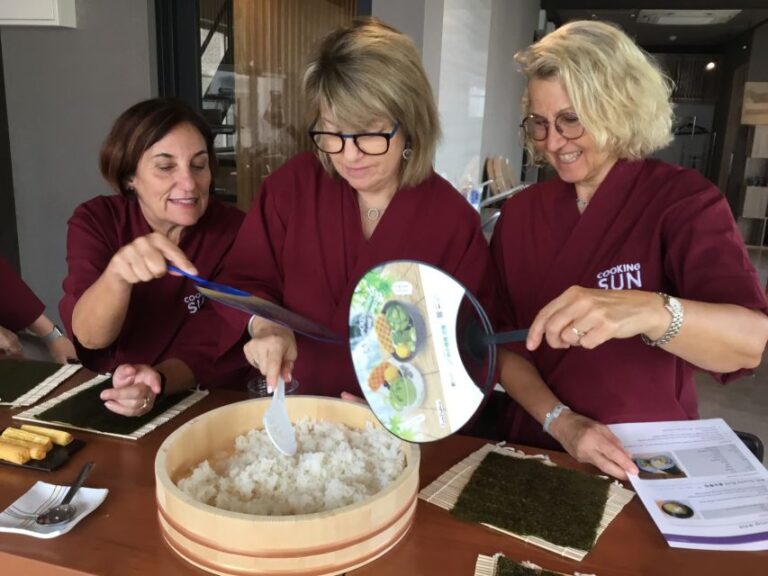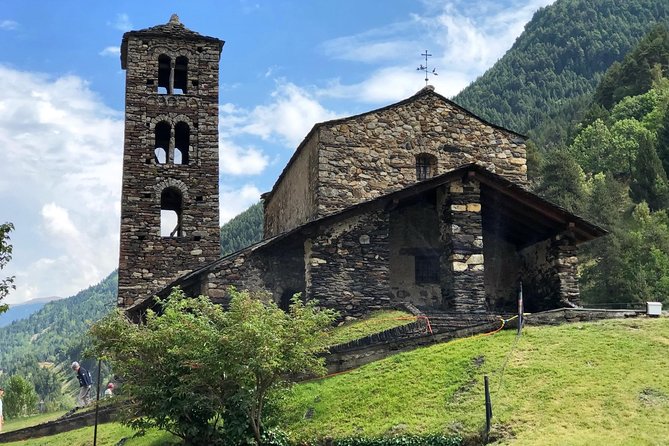Nestled just outside the bustling Spanish capital, the Escorial Monastery and the Valley of the Fallen offer a captivating glimpse into Spain’s rich history and cultural heritage. Visitors can explore the UNESCO-listed Escorial, marveling at the grand Baroque basilica and royal tombs, before venturing to the nearby Valley of the Fallen, where a colossal granite cross stands as a testament to the country’s tumultuous past. With breathtaking architecture, intricate details, and picturesque countryside vistas, this half-day adventure promises to transport travelers back in time and leave them eager to uncover more of Spain’s remarkable story.
Key Points
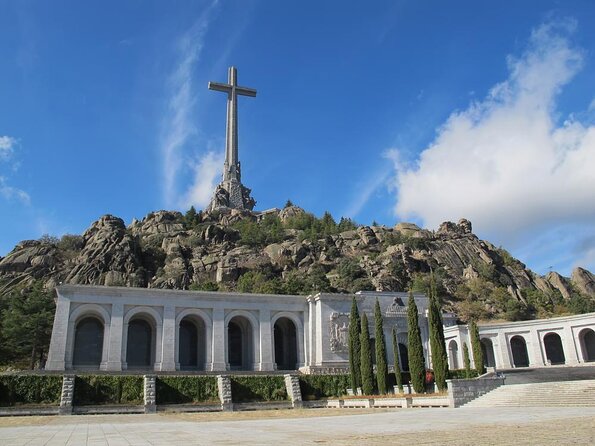
- The tour offers a half-day exploration of the UNESCO-listed Escorial Monastery and the Valley of the Fallen, departing from central Madrid.
- The Escorial Monastery features royal tombs, a grand basilica, and an impressive Pantheon of Kings showcasing the history of Spanish monarchs.
- The tour provides guided access to the Escorial Monastery’s architectural highlights, including the Baroque dome, frescoed walls, and the Weapons Room.
- The Valley of the Fallen features a colossal granite cross towering over a vast basilica carved into the mountainside, offering a tranquil setting.
- The tour includes comfortable air-conditioned transportation and a radio-guide system, ensuring a seamless and efficient sightseeing experience.
Tour Overview
The tour offers a captivating half-day exploration of the Escorial Monastery and the iconic Valley of the Fallen, providing visitors an immersive glimpse into Spain’s rich cultural and historical tapestry.
The excursion departs from central Madrid and transports guests in air-conditioned comfort to the UNESCO-listed Escorial Monastery, where a guided tour unveils the royal tombs, basilica, and Baroque architecture.
Next, the tour ventures to the Valley of the Fallen, a vast basilica carved into a mountain, showcasing the colossal granite cross and the vaulted crypt with sculpted angels.
Throughout the journey, travelers will learn about Spain’s fascinating history and cultural treasures through the expertise of the bilingual guide.
UNESCO-listed Monastery
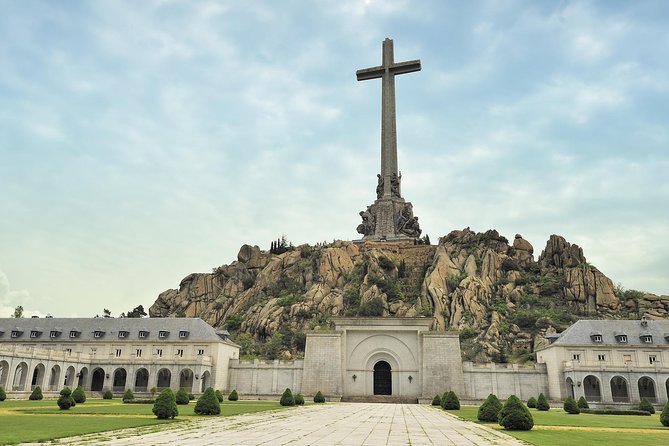
As the centerpiece of the tour, the UNESCO-listed Escorial Monastery dazzles visitors with its regal splendor, where a guided exploration unveils the site’s rich history and architectural marvels. Highlights include the royal tombs where Spanish kings and queens are laid to rest, the grand basilica with its Baroque dome, and the impressive Pantheon of Kings. The Architects Room showcases the impressive craftsmanship, while the Weapons Room displays a collection of historic firearms. Visitors can also admire the intricate library frescoes, a true feast for the senses.
| Royal Tombs | Basilica | Pantheon of Kings |
|---|---|---|
| Final resting place of Spanish monarchs | Magnificent Baroque dome | Revered chamber for Spanish royalty |
| Emblematic of the monastery’s grandeur | Spiritual heart of the complex | Symbolic importance in Spanish history |
Architectural Highlights
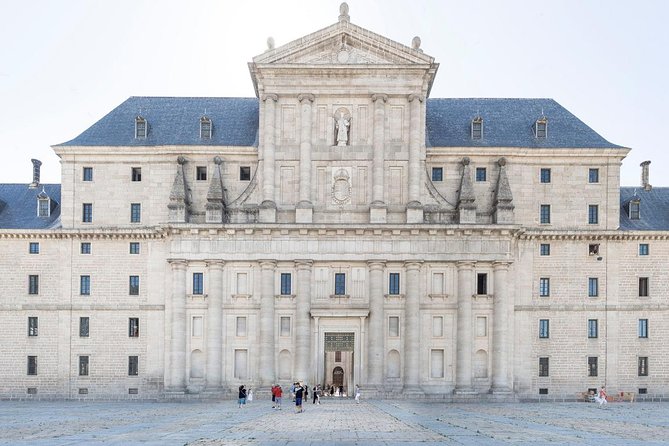
Complementing the monastery’s royal legacy, the Escorial’s architectural features captivate visitors with their sheer grandeur and technical mastery.
From the imposing granite facade to the intricate detailing within, every element of this UNESCO site speaks to the ambition and skill of its 16th-century designers.
The Pantheon of Kings showcases the tombs of Spanish monarchs, while the Basilica’s Baroque dome soars overhead.
The Weapons Room and Architects’ Quarters offer insight into the monument’s multi-faceted history.
Visitors can also marvel at the library’s stunning frescoes, which adorn the ceilings and walls.
Throughout the complex, the seamless integration of function and form reflects the Escorial’s enduring status as an architectural masterpiece.
Royal Tombs and Pantheon
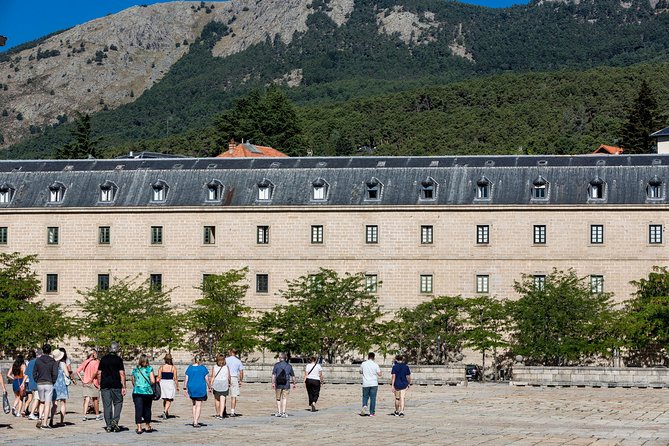
Within the hallowed halls of the Escorial Monastery, visitors are drawn to the Pantheon of Kings – a solemn chamber that houses the mortal remains of Spain’s monarchs. Ornate marble tombs and sarcophagi line the Pantheon’s walls, serving as a tangible connection to the dynasty that shaped the nation’s history.
| Tomb | Occupant | Year of Death |
|---|---|---|
| 1 | Charles I | 1558 |
| 2 | Philip II | 1598 |
| 3 | Philip III | 1621 |
| 4 | Philip IV | 1665 |
| 5 | Charles II | 1700 |
Descending into the crypt, guests can pay their respects to these legendary figures who left an indelible mark on Spain’s cultural and political landscape.
Baroque Dome and Frescoes
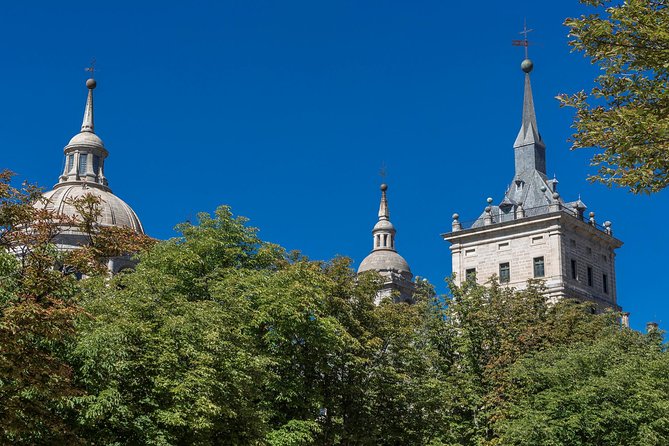
The Escorial Monastery’s Baroque dome crowns the complex, its ornate grandeur drawing visitors’ eyes upward as they explore the historic site. Frescoed alcoves and intricate architectural details adorn the sprawling structure, immersing guests in the monastery’s rich artistic heritage.
The monastery’s frescoes depict biblical scenes and celestial imagery, showcasing the skill of the Spanish artists who adorned the Escorial’s walls. Visitors can admire the Baroque dome’s elegant design, marveling at the interplay of light and shadow that creates a mesmerizing visual experience.
Whether admiring the frescoes or the Baroque architecture, the Escorial Monastery offers a captivating glimpse into Spain’s cultural and religious past.
Vast Basilica and Cross

The colossal granite cross towers over the vast basilica carved into the mountainside, an awe-inspiring monument to Spanish history and faith. Visitors can explore the vaulted crypt beneath, its sculpted angels bearing witness to the grandeur of the Valley of the Fallen. The scale of this monumental site is truly breathtaking, with its towering basilica and the massive 150-meter tall cross standing as a testament to the ambition and devotion of its creators. As you wander through the sacred spaces, the interplay of light and shadow, the richness of the architectural details, and the sense of solemnity all combine to create an unforgettable experience.
| Architectural Feature | Description |
|---|---|
| Basilica | Vast, carved into the mountainside |
| Crypt | Vaulted, with sculpted angels |
| Cross | Colossal granite, 150 meters tall |
| Atmosphere | Awe-inspiring, sacred, solemnity |
Surrounding Countryside Views

From the vantage point of the Valley of the Fallen, visitors can marvel at the sprawling countryside that surrounds the monumental site. Lush, rolling hills dotted with groves of ancient olive trees stretch out towards the distant horizon, creating a picturesque pastoral scene that complements the grandeur of the basilica and cross.
This serene natural setting provides a tranquil counterpoint to the imposing architectural feats that dominate the landscape, inviting visitors to pause and appreciate the harmonious coexistence of man and nature.
The surrounding countryside offers:
- A respite from the awe-inspiring scale of the Valley’s monuments.
- Opportunities to connect with the land and appreciate Spain’s natural beauty.
- A peaceful backdrop that allows for deeper reflection on the site’s historical and cultural significance.
Transportation and Logistics
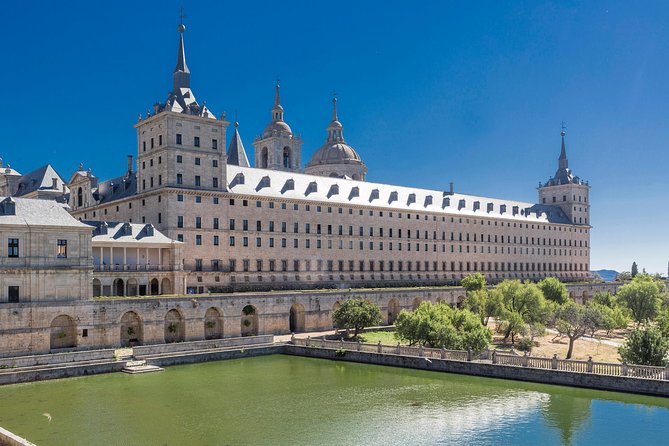
Departing from Plaza Ramales in central Madrid, the tour whisks visitors away in an air-conditioned vehicle, providing comfortable transportation to the Escorial Monastery and Valley of the Fallen.
With a radio-guide system, guests can easily hear the guide’s insights and commentary throughout the journey.
The round-trip travel time is included in the overall tour duration, ensuring a seamless and efficient experience.
Whether you’re exploring the UNESCO-listed Escorial Monastery or marveling at the colossal granite cross in the Valley of the Fallen, the transportation logistics are designed to make the day’s adventures as smooth and enjoyable as possible.
Frequently Asked Questions
Can We Take Photos Inside the Monastery?
Visitors are generally allowed to take photos inside the Escorial Monastery, but there may be some restrictions in certain areas like the royal tombs and library. It’s best to check with the tour guide on photography policies during the visit.
Is There a Dress Code for the Tour?
There is no official dress code for this tour, though visitors should wear modest, comfortable clothing suitable for visiting a religious site. Casual attire is generally acceptable, but guests should avoid overly revealing or casual outfits.
What Is the Best Time of Year to Visit?
The best time to visit is during the cooler months of spring and fall when the weather is mild and comfortable for exploring the monastery and monument. Summers can be quite hot, making the outdoor portions of the tour less pleasant.
Are There Any Dining Options at the Sites?
There are limited dining options at the Escorial Monastery and Valley of the Fallen sites. Visitors can find light snacks and refreshments at small cafes or shops on-site, but a full meal is not available.
Can We Explore the Sites Independently?
No, the tour is guided, so visitors cannot explore the sites independently. However, the tour provides in-depth access and insights that allow travelers to fully experience the historic El Escorial Monastery and the Valley of the Fallen monument.
Recap
The Escorial Monastery and the Valley of the Fallen offer an immersive exploration of Spain’s cultural and historical heritage.
Visitors can marvel at the Monastery’s royal tombs, Baroque architecture, and grand Pantheon, while the Valley’s colossal basilica and cross stand as a testament to the country’s past.
This captivating half-day excursion outside Madrid provides a unique window into Spain’s rich history and natural beauty.


